
From tree to toilet: engineering loo roll
Did you know?
🧻 The average Brit uses how much toilet paper a year?!
- The UK uses about 1.3 million tonnes of tissue a year, according to the Confederation of Paper Industries
- Some estimates put the number of toilet rolls that an average British consumer uses per year at 127 rolls – but only 30% of the world’s population uses toilet roll
- Engineering is involved throughout the whole toilet roll production process and engineers are coming up with ways to make it more sustainable and efficient
Engineers get up to many things. You’ll sometimes find them stroking a concrete wall or leaning precariously off the side of a bridge. You might catch one smiling at an aeroplane the way others would at passing dogs or children. Nothing escapes an engineer’s attention. Then there are engineers who, even as you read this, are sitting on the toilet, trapped there by a humble toilet roll. From terrifying machinery to subtle chemistry, engineering touches toilet paper at every stage of its life, from tree to toilet.
Toilet paper is almost entirely cellulose – the main substance that makes up the cell walls of plants. This means that toilet paper decomposes quickly in sewage systems but is not too fragile so as to lose structural integrity at the most crucial moment of use.
@annaploszajski AD: To celebrate the 100th issue of Ingenia Magazine (www.ingenia.org.uk) being published this month, I teamed up with master videographer @stevecrossphotos to go deeper into some of my favourite Ingenia articles. In this video, we investigated the local roots to the humble toilet roll. Read the full article at: https://www.ingenia.org.uk/articles/from-tree-to-toilet-engineering-loo-roll/ #engineering #engineer #engineers #thisiswhatanengineerlookslike #femaleengineer #thisisengineering#engineerbetterlives #STEM #womeninSTEM #paper #papermaking #HackneyWick #Walthamstow #toiletpaper @This is Engineering ♬ original sound - Anna Ploszajski
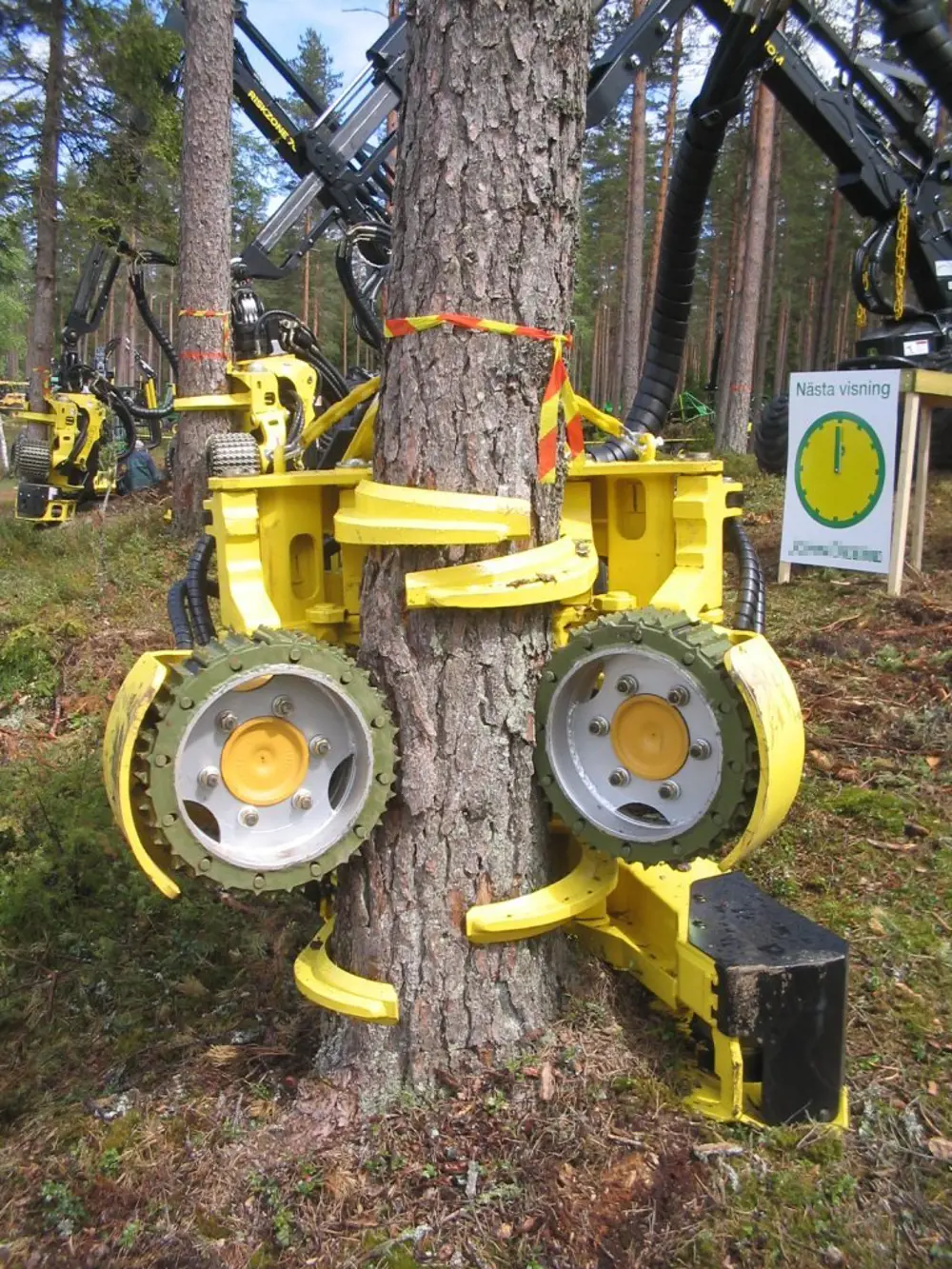
A tree harvester in action © Wikimedia Commons
How wood is processed into paper
Toilet paper’s raw materials are fresh or recycled wood, or recycled paper products. In the former case, the wood usually comes from pine trees – a large tree can produce up to 1,500 toilet rolls. The process for felling the trees varies by region, from hand-wielded chainsaws to highly technical automated machinery, but the steps are the same: the trees are felled, branches removed, and logs cut to standard lengths ready to be turned into wood chips.
Perhaps the most impressive methods of collecting wood from trees are in Sweden and Finland, where lumberjacks use machines called tree harvesters. The machine’s head grips the base of a tree and a chainsaw cuts across the trunk. The tree harvester’s chainsaws are hydraulically powered, making them much more powerful than handheld devices.
Still gripping the base of the trunk, the head rotates as the tree falls to the ground. Once horizontal, two feed rollers grip the trunk and pull it through the head at great speed. It passes through two or more ‘delimbing knives’, which strip all the branches off the trunk in seconds. Mechanical sensors measure the trunk’s diameter and adjust the delimbing knives accordingly. A wheel measures the length of trunk, and the chainsaw cuts the stripped trunk into logs with predetermined length, ready to go to the woodchipper. Computer algorithms tweak the whole process and adjust the different parameters to maximise how many branch-free logs each trunk produces.
Next, a debarking machine removes the bark. A log is mounted horizontally on a series of rough wheels that grip and slowly spin it under a moving cutting head. The head optically scans the shape of the log and controls the blades to shave off just the right depth of bark to conserve as much of the precious inner wood as possible.
Toilet paper is almost entirely cellulose – the main substance that makes up the cell walls of plants. This means that toilet paper decomposes quickly in sewage systems but is not too fragile so as to lose structural integrity at the most crucial moment of use.
The bare logs are now ready for a chipper to transform them into workable wood chips. These machines are similarly large-scale, often as large as a tractor, and as intimidating as the harvester and debarker. A hopper guides logs into the jaws of the chipper, which can be either a rotating disc with blades on – a bit like a rotating cheesegrater – or a rotating drum with blades on its outer surface. Either way, the chipper ejects the shredded log chips from a chute for storage. Grooved rollers grip and push the logs through the chipper, keeping workers at a safe distance. These powerful chippers, typically hundreds of kilowatts, are usually powered by an internal combustion engine.
Wood is a composite material made from fibrous cellulose (a linear polymer) and hemicellulose (a cross-linked polymer) held together in a matrix of glue-like lignin, a bit like a natural carbon-fibre reinforced plastic composite. Once chipped, the wood is ready to give up its precious cellulose in the pulping process, also known as the kraft process (‘kraft’ meaning ‘strength’ in German). Here, wood chips are heated to about 170°C in digesters under pressure with water, sodium hydroxide, and sodium sulfide. This breaks the chemical bonds between the cellulose, hemicellulose, and lignin components, so the cellulose can then be recovered.
The cellulose fibres are usually 1 to 2 millimetres long, and about 30 micrometres wide – the width of a fine human hair. The straighter and longer the fibres, the stronger the resulting paper. Mechanical action at the pulping stage can shorten the fibres, and introduce kinks and curls, all of which results in weaker paper. However, tissue paper is designed to be easily ripped so damaged fibres aren’t necessarily too much of a problem.
The whole process is made as efficient as possible; the slurry of cellulose fibre pulp that comes out of the kraft process is heated to separate the pulp from the pulping chemicals, which are recovered for reuse. High pressure steam generated by the recovery boiler can feed turbogenerators to provide electricity for the mill or nearby industries, or feed onto the grid for local communities. Once the cellulose is recovered, it is diluted with water to create a suspension of 0.5% fibre. This is then screened, washed in stages and bleached to make it white.
From terrifying machinery to subtle chemistry, engineering touches toilet paper at every stage of its life, from tree to toilet.
Panic buying
From pandemics to sustainability: the global factors changing our consumption of toilet paper
Toilet paper made headlines in March 2020. More specifically, it was its absence that was particularly notable and distressing. Despite retailers reassuring us that there were no shortages, consumers began hoarding and pushed supply chains to breaking point. This left many of us facing empty shelves and empty toilet roll holders at home.
This sudden spike in demand exposed the weakness in the UK supermarkets’ ‘just-in-time’ supply chain model. Here, every link in the chain supplies to the next link only when it is needed. In normal times, the just-in-time model reduces waste, lowers costs, and increases the efficiency of the supply chain. But March 2020, as the COVID-19 pandemic gripped the world, was anything but ‘normal’.
It’s tempting to think of a supply chain as a linear sequence of businesses, from raw materials to supplier, manufacturer, distributor, retailer, and consumer. In reality, most modern supply chains are complex networks of actors based all around the world. Manufacturing engineers use complex models to fine tune supply chains, trying to get the right balance between efficiency and resilience against unexpected circumstances.
Few could have predicted that a global pandemic would lead to a short-term shortage of toilet roll in my local Tesco, but there are other global shifts that are easier to foresee. One of these is a shift towards sustainability at all points in the supply chain, from tree to toilet.
Toilet paper is, of course, designed to be single use. Estimates vary, but toilet paper may account for 10% to 15% of deforestation worldwide, with about 27,000 trees-worth of toilet paper flushed down the world’s loos every day. Although wood is generally seen as a renewable resource, other faster growing sources of cellulose could help combat deforestation, such as fast-growing bamboo and bagasse, a by-product of the sugar industry. And, compared to other products, the single-use nature of toilet paper means that any loss of performance that results from using recycled paper feedstocks can mostly be compensated for in green credentials gained.
Other areas for improved sustainability in the manufacture of toilet paper include reducing water usage, bleaching with chlorine-free chemicals, and reducing the diameter of the cardboard inner tube to improve shipping efficiencies.
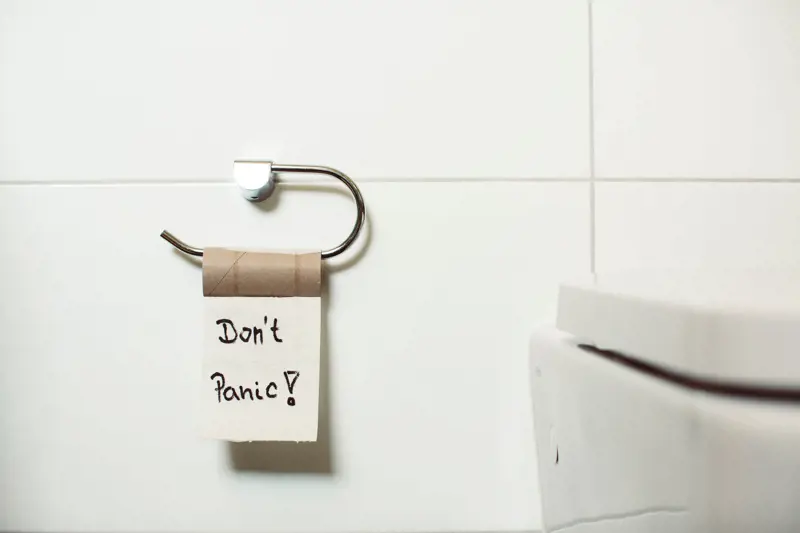
What about recycled toilet paper?
Some toilet paper is made from recycled paper. The recycling process produces damaged fibres, but this is usually an acceptable feedstock for toilet tissue. Recycled paper is often mixed with new pulp to maintain enough mechanical integrity in the end product.
The recycling process mixes wastepaper with water and agitates it in a pulper, a machine not dissimilar to a washing machine. This allows metal or plastic contaminants to sink to the bottom and be removed. That is not the end of the cleanup process for recycled paper. Some inks contain toxic heavy metals such as lead, cadmium, and hexavalent chromium, which must be removed and disposed of safely. (To ensure the safety of recycling processes, these inks are being phased out of the production of recyclable materials.) In the next step, air bubbles are blown through the gloopy pulp. Ink particles attach to air bubbles and form an inky foam that is skimmed off, leaving the rest of the pulp ink-free. Next, the pulp is squeezed through rollers to remove some water and passed through a contraption of revolving knives to break it up.
After this point, the process is the same, regardless of raw material, new or recycled pulp. The watery pulp suspension is sprayed onto a continuously moving screen of a very fine stainless-steel mesh. The process forms a wet sheet of matted fibre over 1.5 metres wide. The fibre sheet runs through hot rollers at over 150°C, which dries it in less than a second. This produces a continuous roll of delicate paper that is just 0.1 millimetre thick. The result is a spool of paper around 75 kilometres long.
A creping process follows to create the required texture and structure for tissue paper. Creping involves a sharp blade scraping the paper off the dryer to create a slightly crinkled sheet. This helps to improve the paper’s flexibility and absorbency. Creping also weakens the paper so that it will disintegrate when wet. Next time you’re in the loo, notice the subtle stretch in your toilet paper – that’s thanks to the creping process. Next, perforating machines stamp rows of holes to perforate the paper into rippable sections. At this stage patterned rollers can also emboss a pattern onto the paper, which also helps with absorption.
Where did toilet paper come from?
🧻 From old newspapers to the OG rolls
A brief history of toilet paper can tell us a lot about society, education, and industry. Paper itself was invented in China in about 100BC. For over a millennium, papermaking remained a batch-production process. Sieve-like moulds were lifted through watery suspensions of wood pulp. The captured fibres formed a matted layer that was compressed and dried to form paper sheets.
The Ancient Chinese did use paper as toilet paper, but it didn’t catch on further afield, partly because this labour-intensive process made paper a valuable commodity. It wasn’t until the dawn of the printing press in 15th century Europe that paper was adopted as a writing material elsewhere, because it outperformed its material rivals, papyrus and parchment, when used in the printing press.
The printing press brought about a high demand for mass-produced paper, and eventually led to the continuous roll-to-roll processes for large-scale papermaking in the early 19th century. This produced cheap, mass-produced reading materials and newspapers, widening access to education for women and the lower classes. It was in these forms – everyday scrap paper such as bags, letters, envelopes, and newspapers – that paper first found use in European bathrooms.
The first paper sold just for bathroom use in the western world in the late 19th century was produced by the British Perforated Paper Company and the Scott Paper Company in the US. These early iterations came in single pieces, sold in discrete cardboard boxes. The roll-based version that we know and love today followed in 1891. In case you were wondering, in his patent, Seth Wheeler of Albany, New York, showed the available end of the roll in an ‘over’ configuration.
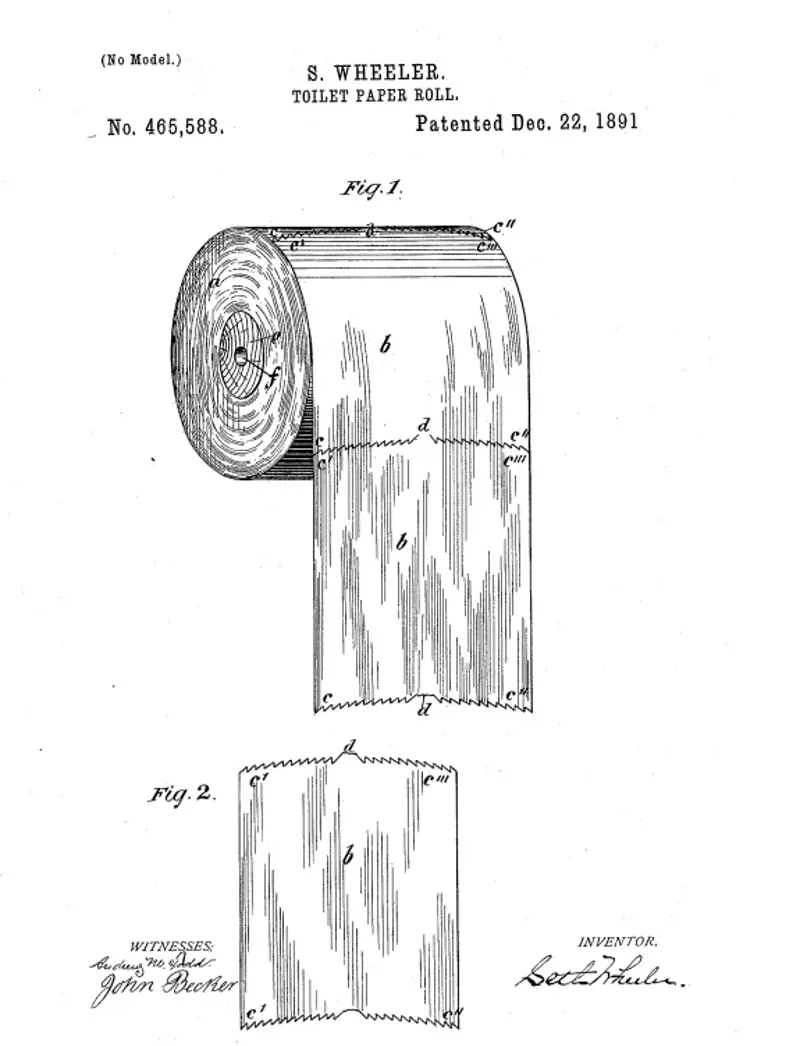
The toilet roll diagram from Seth Wheeler's patent application
On a roll: the finishing touches
Elsewhere in the factory, recycled cardboard inners are made by winding two strips of thin recycled cardboard around a core to make a tube, which the new paper is then wound onto. Two sheets are simultaneously fed onto the tube, one from above and one from below. The sheets come together as they are wrapped onto the cardboard inner to form two-ply toilet paper.
Once the roll has been wrapped to the right size, a long blade cuts the paper and a machine automatically seals the end with glue to stop it unravelling. At this stage, the toilet paper is still on an extremely wide roll. The final stage is for a circular saw to cut the wide roll into standard-width rolls that are then automatically packaged in paper or plastic. In this way, toilet-paper factories can produce millions of rolls every single day.
Like many engineering topics, the production of toilet rolls still has its challenges. For example, materials engineers are studying toilet paper in finer and finer detail to better understand its structure–property relationships, hoping to close the loop further on recycled paper products. Manufacturing engineers seek to make marginal gains in the manufacturing process to make it more resource and energy efficient.
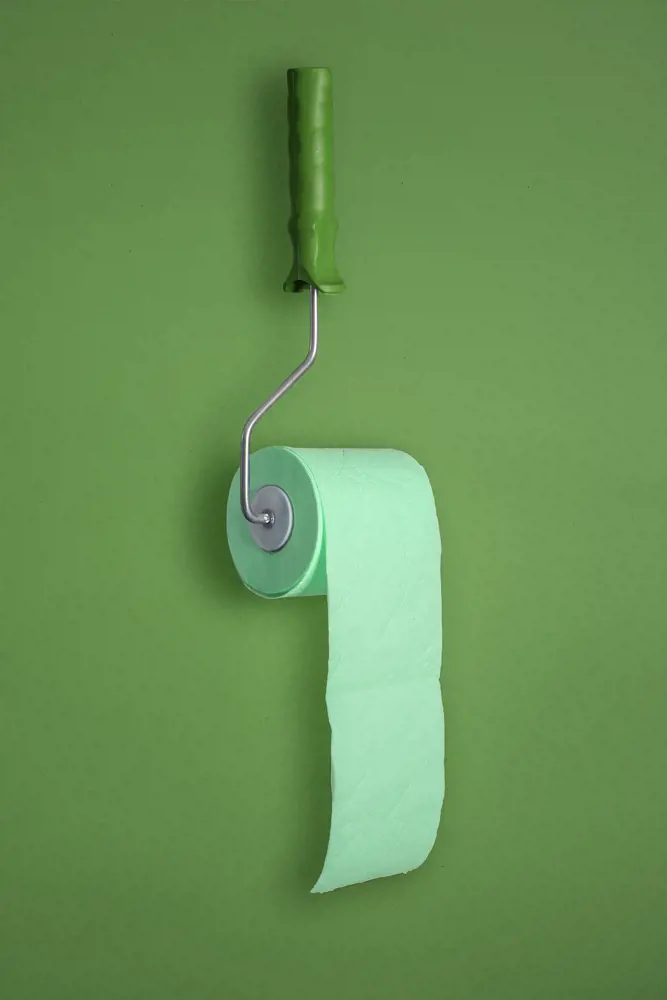
© lilartsy / Unsplash
One organisation making a change is Australian startup company Who Gives a Crap. Its plastic-free products are made entirely from recycled feedstocks and the founders donate 50% of the enterprise’s profits to partners including WaterAid, Splash, and Sanergy, who build toilets and improve sanitation in lower-income countries. Their donations have amounted to almost 11 million Australian dollars at the time of writing. About two billion people in the world don’t have access to a toilet and contaminated water contributes to over a million deaths a year, when human waste ends up in local waterways – by being sold in this way, the humble toilet roll is indirectly helping to improve sanitation and save lives globally.
And seismic shifts in consumer priorities, from increased costs of living to higher demands for sustainability, may further shake up the industry as a whole; will there be new products designed to do away with toilet paper all together? These are the thoughts swirling round the heads of the engineers stuck on the loo as you read this, from tree to toilet, and beyond.
***
This article has been adapted from "From tree to toilet: engineering loo roll", which appeared in Ingenia 92 (September 2022).
Keep up-to-date with Ingenia for free
SubscribeRelated content
Materials

What are aerogels?
Among some of the lightest known solid materials, aerogels, formed by removing liquid from gels, have many uses ranging from catalysts and sensors, to being used on NASA missions.
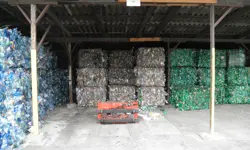
Recycling household waste
The percentage of waste recycled in the UK has risen rapidly over the past 20 years, thanks to breakthroughs in the way waste is processed. Find out about what happens to household waste and recent technological developments in the UK.

Diamond technology: beyond hardness
Diamond is being used in an increasing variety of industrial and technological applications, due to other properties in addition to its hardness. The UK is home to a wide range of diamond research, development and synthetic diamond production activities.

A lot more than lubrication
The control of friction and wear in mechanical systems by lubrication and surface engineering has led to safer, faster transport as well as medical innovations. Ian Hutchings FREng, GKN Professor of Manufacturing Engineering at the University of Cambridge, highlights the progress and some failures of the important discipline of tribology.
Other content from Ingenia
Quick read

- Environment & sustainability
- Opinion
A young engineer’s perspective on the good, the bad and the ugly of COP27

- Environment & sustainability
- Issue 95
How do we pay for net zero technologies?
Quick read

- Transport
- Mechanical
- How I got here
Electrifying trains and STEMAZING outreach

- Civil & structural
- Environment & sustainability
- Issue 95